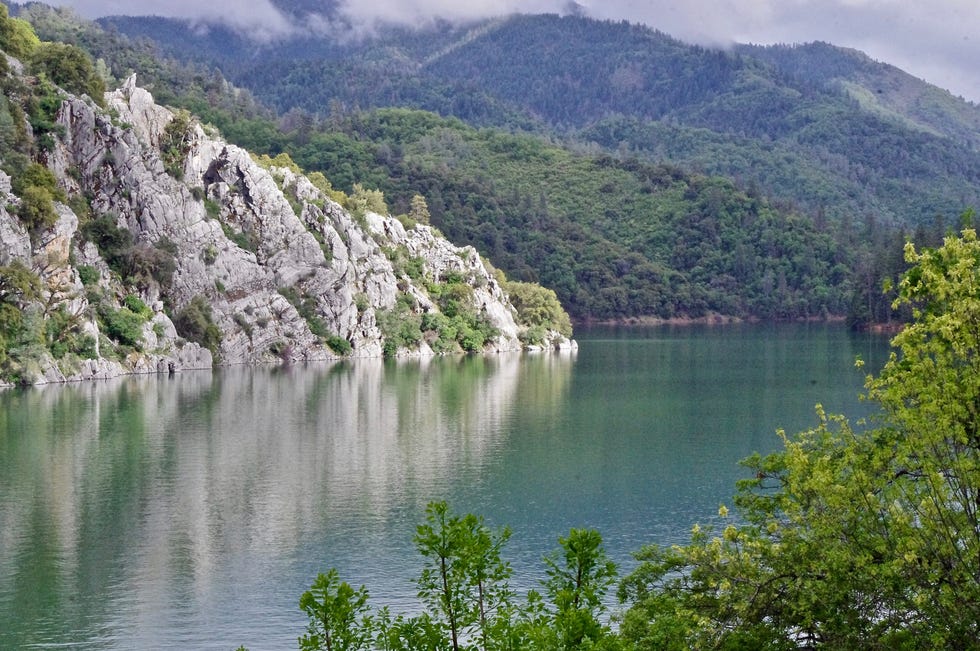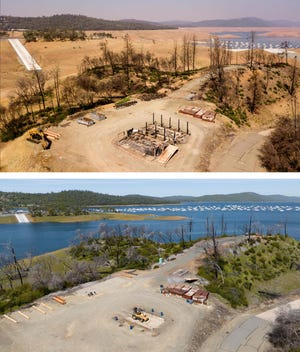California agencies warn of potential summer floods as lake levels climb to full capacity
As California agencies brace for possible summer floods, officials are warning visitors of Northern waterways to take precaution as record-breaking snow packs built up from winter storms continue to liquify.
Both Lake Oroville and Lake Shasta reported near-full capacity Monday.
Shasta Reservoir, the state’s largest man-made lake located on the upper Sacramento River near the city of Redding, is now higher than it has been in years.
As of May 15, Lake Shasta is 98% full and just a few feet shy of its 2019 high, according to the Bureau of Reclamation. Water levels have risen nearly 150 feet since the start of 2023. The lake, which has risen nearly 150 feet since the start of 2023, is so full right now that shoreline and trees are scarce, the Enterprise Record reported.
Lake Oroville is expected to be filled into the spring and was 10 feet away from reaching its 900-feet capacity, according to Tuesday's water level report. In the last 30 years, Oroville has reached capacity nine times, the last being in 2017, the Enterprise Record confirmed with the California Department of Water Resources.


With high water levels and warming temperatures, law enforcement and park officials in Shasta and Siskiyou counties are asking swimmers, boaters and kayakers to check conditions and for floating debris before entering fast-moving waters.
Heavy snows that fell in the mountains and foothills during the winter will continue to melt, pouring into the Sacramento River and nearby waterways, according to the Redding Record Searchlight, part of USA TODAY Network.
How fast that happens will depend on how quickly it gets hot, but even after warm weather in late April and some flooding in the south Sacramento Valley, “the statewide snowpack overall melted at a slower pace than average” because of cloudy skies and cool temperatures, according to a snow survey report issued by the water resources department on May 1.
Officials said swimmers should take extra precaution in sections of the lake where the water remains extremely cold, even if the air is warm, and in now-shallow areas that were dry last year. Swimmers can lose muscle control more quickly in frigid temperatures, and since it has been several years since the Lake was full, some landmarks look different or could be completely submerged.


More coverage by USA TODAY
Yosemite warns of more closures through July: What the park looks like amid record melts
2023 Most Endangered Historic Places in America list shows 'connections between people, place'
The call is coming from inside the internet: AI voice scams on the rise with cloning tech
Angry herders spear, kill 11 lions in Kenya, including Loonkiito, one of nation's oldest
USF professor sets world record for living underwater in 100-day experiment
No comments: